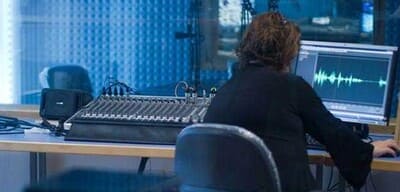Audio Recording Software: Then and Now
Professional audio recording software, better known as a DAW (Digital Audio Workstation) has now become the norm in sound studios the world over. Whether used in sound recording, music or post-production, this software is all the rage. It isn’t just a tool used by slick, professional studios either, because everywhere, from that ukulele player on YouTube to the local school’s in-house production, you will probably find a computer running audio software to help create and edit sound in today’s digital age.
Audio recording was first discovered way back in the 1800s, although the digital age began a lot more recently than that. The 1980s were crucial in recording studio software history as this was the period when MIDI or Musical Instrument Digital Interface first came into play. Soon, legendary pieces of code like Steinberg Cubase, Emagic Notator, and Cakewalk first came into being. In ’89, Digidesign created sound tools, which is the spiritual birth of audio software as we know it. The first iteration of Pro Tools came to being in 1992, and Logic Audio and Cubase created, updated software to match its pioneering multi-track layout and notation capabilities.


As the ’90s wore on, Pro Tools introduced innovations like 16-bit or 24-bit audio and 84-track mix capabilities. The real next big jump though, came from Steinburg with the introduction of the famed Nuendo in 1999. With 96 kHz recording and 5.1 surround, it was the hottest software out there, and Pro Tools scrambled to keep up, releasing its own surround sound capable update in 2002. In all this time, PC and Mac compatibility were a big issue because usually this software was only designed for either one of the two operating systems.
After 2003, the audio software industry saw a massive reshuffle and a spate of buyouts. The next big thing in that period was Sonic Foundry with their Sound Forge editing software, but Sony bought the whole firm out. Digidesign was taken over by Avid, and another up-and-comer in Syntrillium and their quirky Cool Edit Pro was bought out by Adobe (who changed it to the first ever Adobe Audition, a software that is still around today). Apple acquired Emagic and Logic Audio, and Steinburg joined the house of popular video editing software makers Pinnacle.
Today, Pro Tools, Logic Pro and Cubase are all industry leaders and are considered some of the best music making software out there. Ableton Live also deserves a mention and an induction into the ‘best music production software’ category at this juncture.
New plug-ins, no-loss compressed file formats, and high-density mediums such as BluRay have turned the audio recording software industry on its head. Services like Spottily, Pandora and Sound Cloud are revolutionizing the way we share music, and better innovations are cropping up almost every day. However, none of them would have been here if it wasn’t for that one magic boom in the ’80s, which saw the birth of industry standard software like Ableton, Pro Tools, Logic and more, all of which are now taught as a part of most, if not all, colleges that offer a diploma or a degree in sound engineering across the world.
Browse through the sound engineering courses we offer and learn music production, recording, editing, mixing and arrangement – all on industry-standard software and state-of-the-art in-house studios.


CATEGORIES
Are you aspiring to become a proficient Sound Engineering professional?
Look no further; we are committed to nurturing the potential of young minds. Are you ready to enhance your skills?

